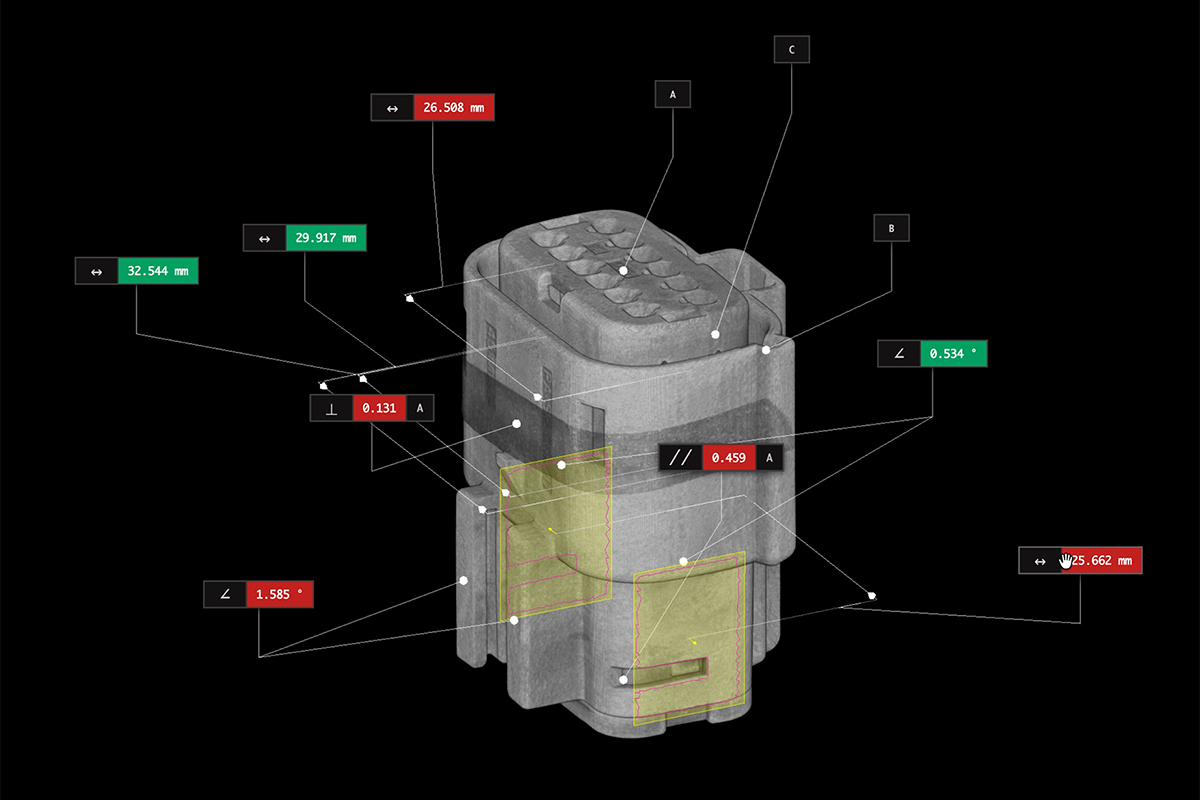CT teardown: AirPods Pro (2nd Generation)
Apple’s new AirPods Pro (2nd generation) promises longer battery life, better sound, and a more polished user experience. We’ll use our Neptune industrial CT scanner to perform a nondestructive teardown and see how these earbuds compare to the first-generation AirPods Pro, which we've studied on Scan of the Month.
You can explore these AirPod scans in more detail inside our Voyager software; just create a free account to get started.
Here’s the second-generation charging case with the earbuds in place. The basic layout of the case is similar to the first-generation case, with two batteries sandwiching the main logic board. Like the first-generation case, a pair of magnets keeps the lid closed and another magnet in each charging well pulls the earbuds into place. The new case adds four magnets around the inductive charging coil; they align the case with a MagSafe or Apple Watch charger.
There’s a new metal eyelet on the side of the case. Apple says it’s for a lanyard, but it seems to serve an additional purpose: it’s 4 mm deep and 18 mm long, with a hidden tail that’s connected to a metal pad around the Lightning port. Perhaps it’s an antenna to support improved “Find My” tracking.

The hinge on the back of the case looks like metal, but our scan shows that it isn't. While the eyelet is solid aluminum, the visible components of the hinge are actually electroplated plastic, with a real metal pin inside. This kind of dishonesty in materials is unusual for Apple, but it’s remarkable that Apple’s engineers managed to match the electroplated finish to the metal eyelet perfectly.
The second-generation case offers several new features, including gentle audio cues and a louder ping to help find lost AirPods. To support them, the new case has outward-facing speakers and a little extra control circuitry, but is otherwise remarkably similar to the first-generation case. There’s some clever value engineering in the new lid spring: a thin, bistable metal strap has replaced the first generation’s complex spring-loaded pin assembly.

Between the release of the original AirPods in 2016 and the first-generation AirPods Pro in 2019, the product went through several major reorganizations, with the earbuds' batteries and logic boards switching places. This revision is much more subtle. Apple says these offer better sound and better battery life—improvements that seem to be driven largely by the earbuds’ new H2 processor. The high-level layout of the new earbuds is nearly identical to the first generation product.
A battery sits in the head of the earbud with the logic board behind it. The antenna and charging contacts are in the stem. A large magnet below the battery helps the earbud snap into its charging position in the case. As in the first generation AirPods Pro, we see three microphones: one toward the bottom of the stem to pick up the wearer's voice during calls; one facing outward at the top of the stem to collect ambient sound for noise cancellation; and one pointed into the ear canal to tune audio response. The new swipe UI in the stem is supported by an additional sensor along the flat surface of the stem.
You can explore these scans in detail through Voyager, our browser-based industrial CT analysis software. Reach out to our team to learn how Lumafield's accessible industrial CT technology works for your application.










